Have you ever thought about the underwater world of the future?
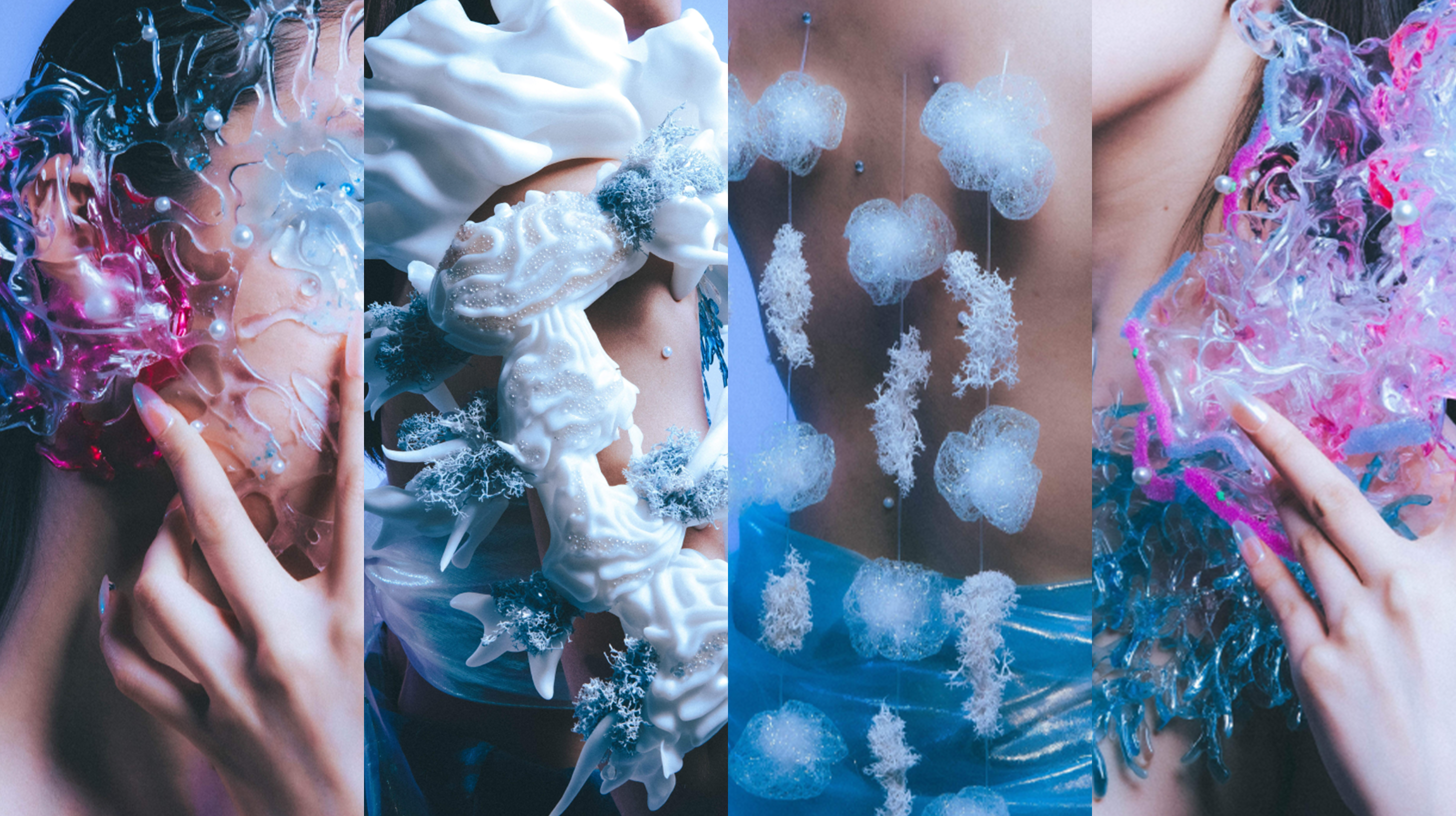
In a future where oceans cover ninety-five percent of the planet, humanity is forced to reinvent itself, adapting to life beneath the sea. A new civilization thrives in the deep, where humans no longer stand apart from nature but live in continuous exchange with it. Here, organisms and humans intertwine in symbiotic relationships that blur the distinction between species. These marine beings function like external “organs,” merging with the human body to extend its capabilities while drawing nourishment and protection in return. This underwater world is not a tale of domination, but of reciprocity — a vision of life redefined through balance, equality, and coexistence.
Organisms Utopia is a speculative design project — a hypothetical vision rather than a scientific prototype. It does not aim to predict technology, but to use design fiction to provoke reflection. By imagining a world where survival depends on symbiosis instead of control, the project invites us to reconsider humanity’s relationship with other life forms. Returning to the ocean — the cradle of all life — this work asks a simple yet profound question: what might it mean not only to be human, but to be alive, if equality across species became our foundation?
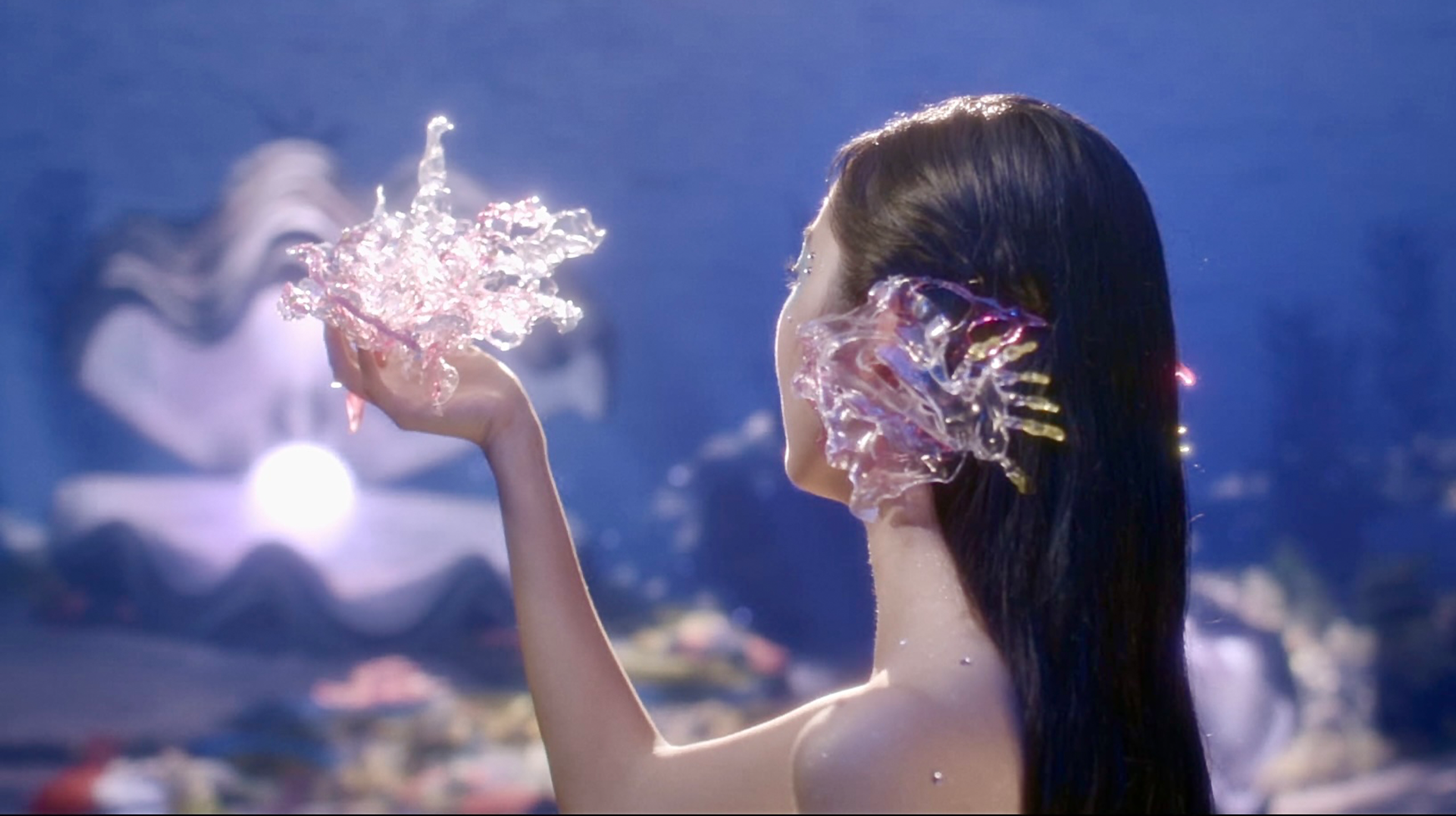
Organisms Utopia unfolds as a speculative design project that uses wearable art as a medium to explore new paradigms of symbiosis. Instead of aiming for scientific accuracy, the project constructs a fictional ecology where organisms and humans evolve together beneath the ocean, prompting reflection on how such coexistence could reshape our definitions of life and interdependence.
Within this imagined world, marine organisms emerge from diverse habitats — coral reefs, deep trenches, kelp forests, and open waters. Each carries distinctive traits that grant oceanic humans new sensory or functional abilities, while drawing nourishment and shelter from the human body in return. These relationships are not simply parasitic or utilitarian; they represent an alternate vision of reciprocity and equality across species.
To materialize this vision, the project employs experimental making methods such as 3D printing, heat-shrinkable materials, and UV resin. The resulting wearable artifacts — designed for the head, shoulders, arms, and hands — act as proxies for speculative organisms. Some integrate sensors to simulate touch or environmental response, inviting the audience to imagine how it might feel to host or embody another life form. Through these crafted experiences, Organisms Utopia seeks to provoke dialogue about our future entanglement with the living world.
The project positions itself within the field of speculative design, where fiction is used as a tool to question present realities and imagine alternative futures. Organisms Utopia does not aim to model scientific truth; instead, it borrows inspiration from marine biology, parasitic systems, and ecological principles to create a sense of plausibility. This approach, often referred to as “fictional prototyping,” allows design to operate as a form of inquiry: not to predict what will happen, but to ask what if and to explore the cultural and ethical implications of such possibilities.
By weaving together fragments of science, design, and narrative, the methodology emphasizes the role of design as a catalyst for reflection. In this way, the project situates itself not as a forecast of technological progress, but as a platform for dialogue about how humanity might reimagine its relationship with other life forms.
The design process of Organisms Utopia progressed through multiple layers — from initial explorations of body attachment to ecological world-building — each stage expanding the plausibility of the speculative vision.
Initial Sketch: Exploring Attachment
The project began with sketches that tested how imagined organisms might physically attach to the human body. These drawings explored points of contact — the head, shoulders, arms, and hands — as well as preliminary ideas about form and texture, asking how external “organs” could merge with the human figure.
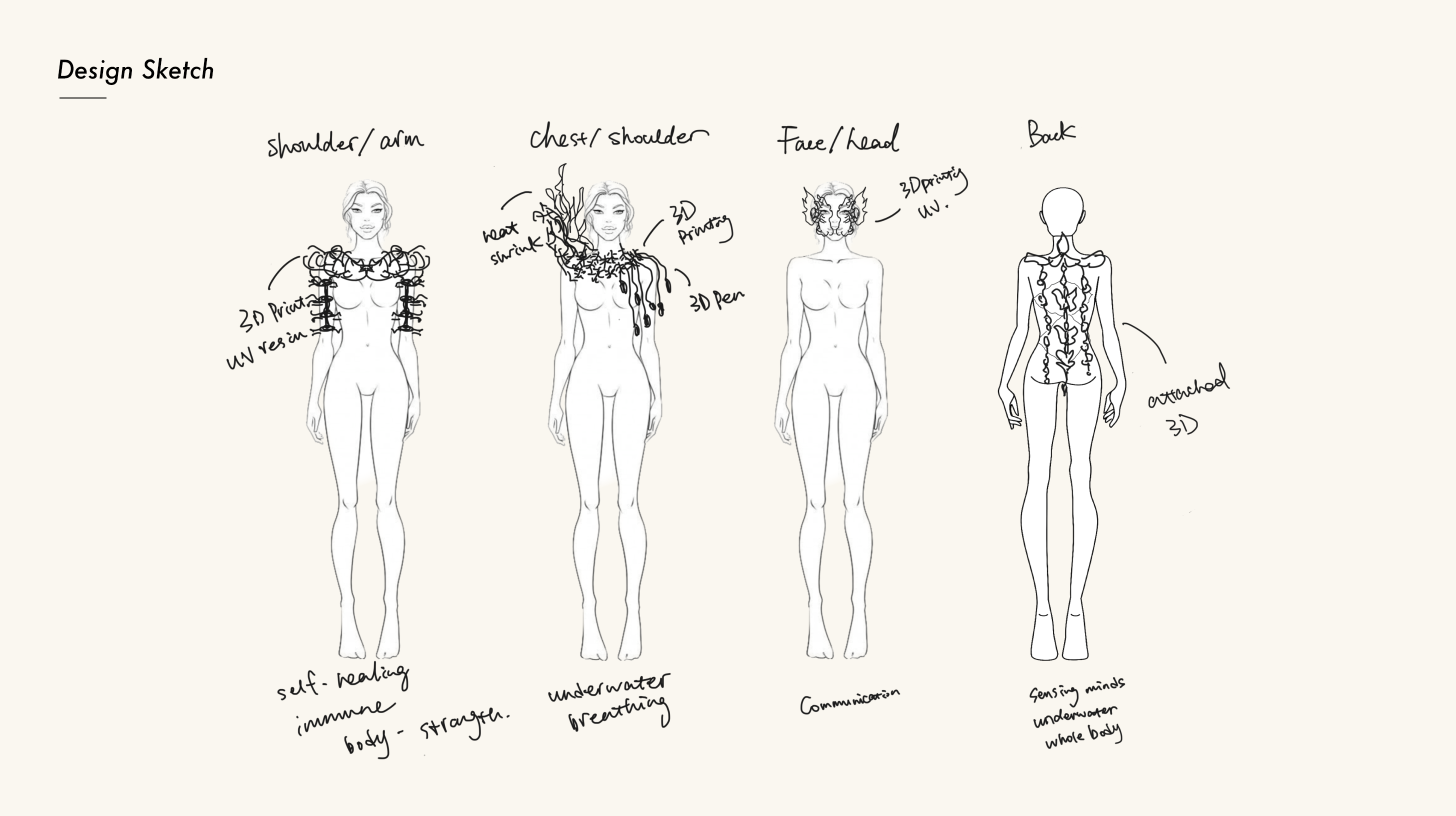
Detailed Sketch: Defining Organisms
Building on this foundation, detailed sketches were created to develop the imagined organisms themselves. Each sketch defined a creature’s habitat, characteristics, and mode of symbiosis — including what abilities it could grant oceanic humans and how it might, in return, draw nourishment or resources from the host body. In this stage, the mutualistic logic of the project was established.
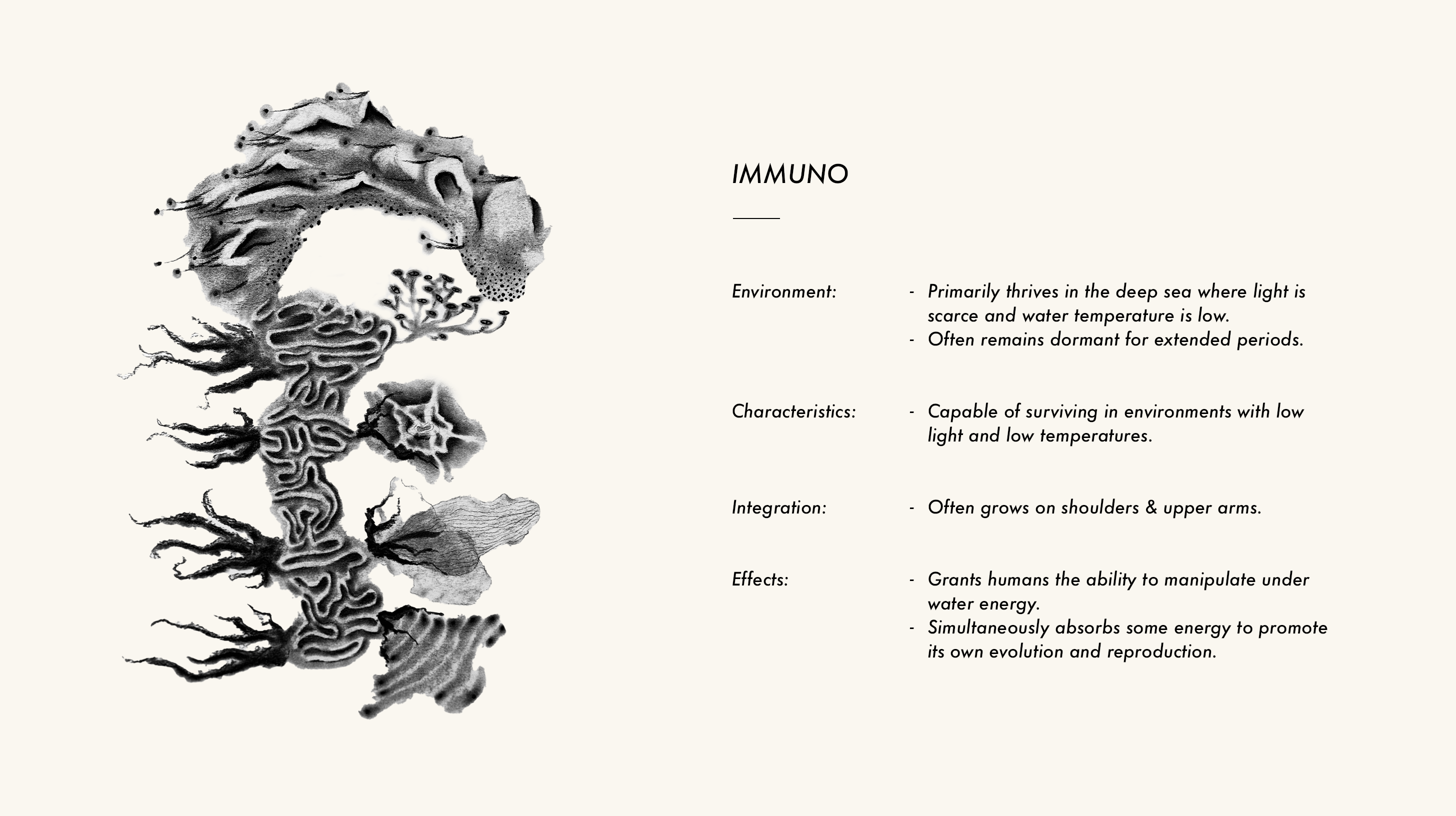
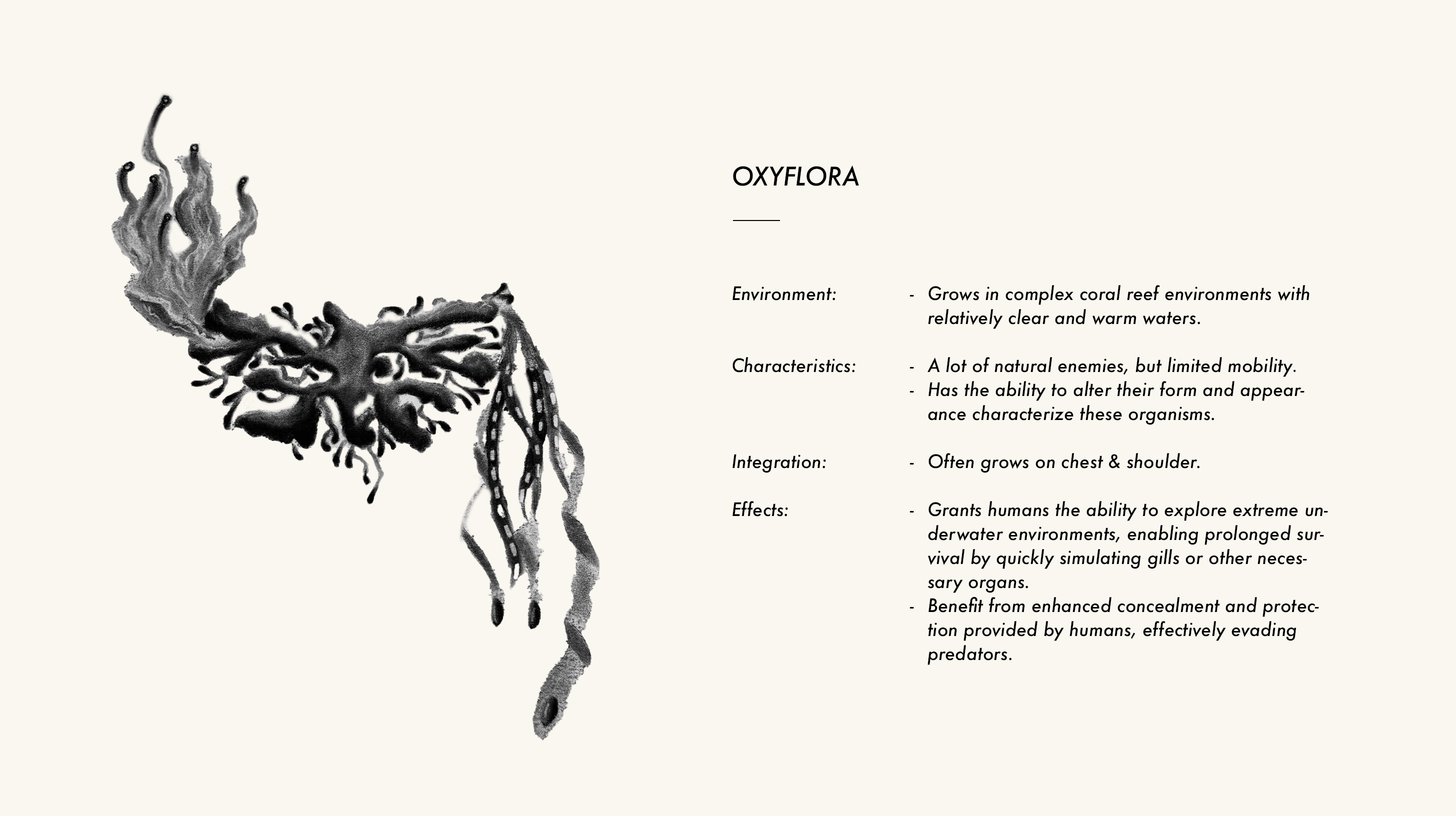
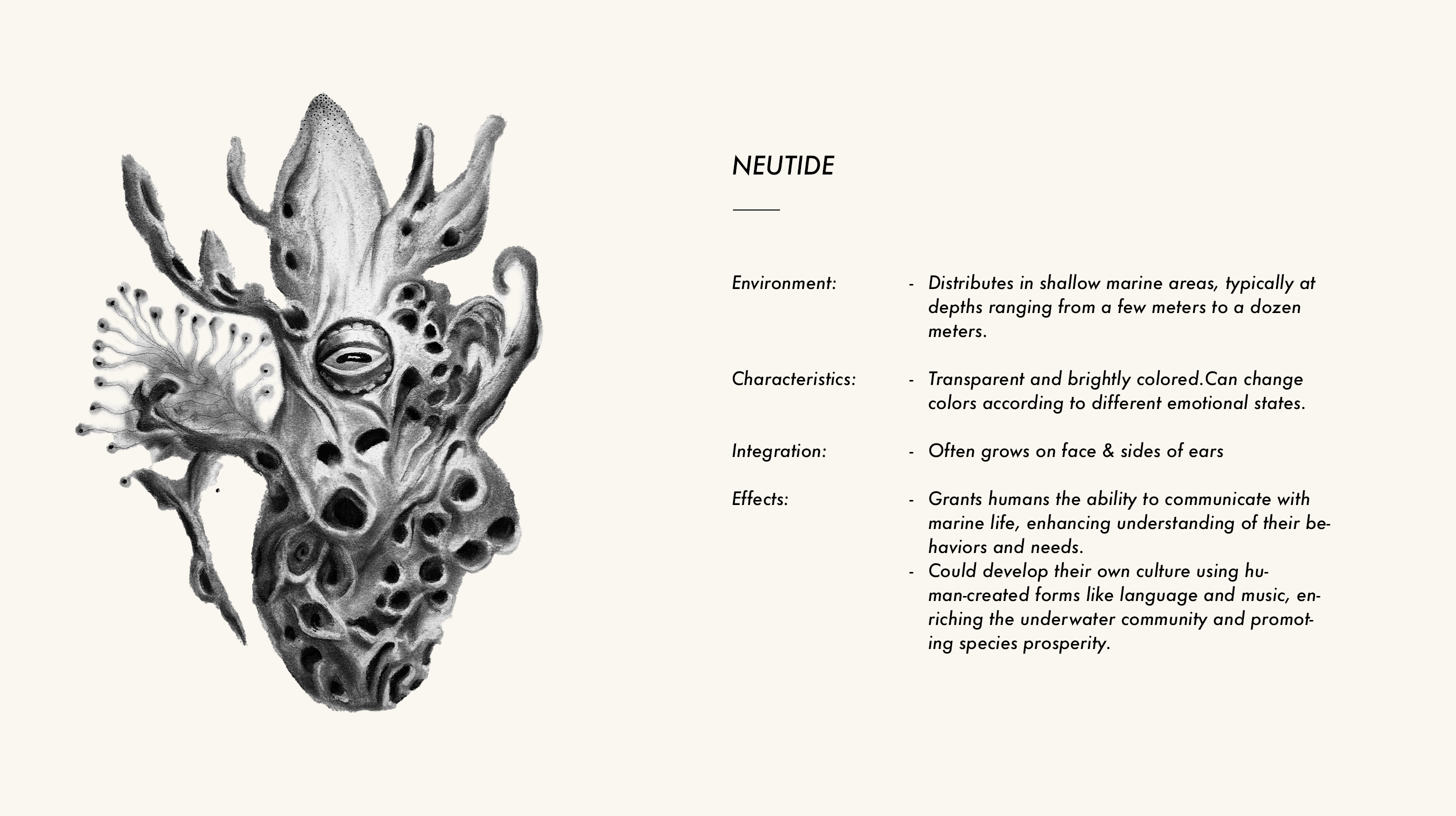
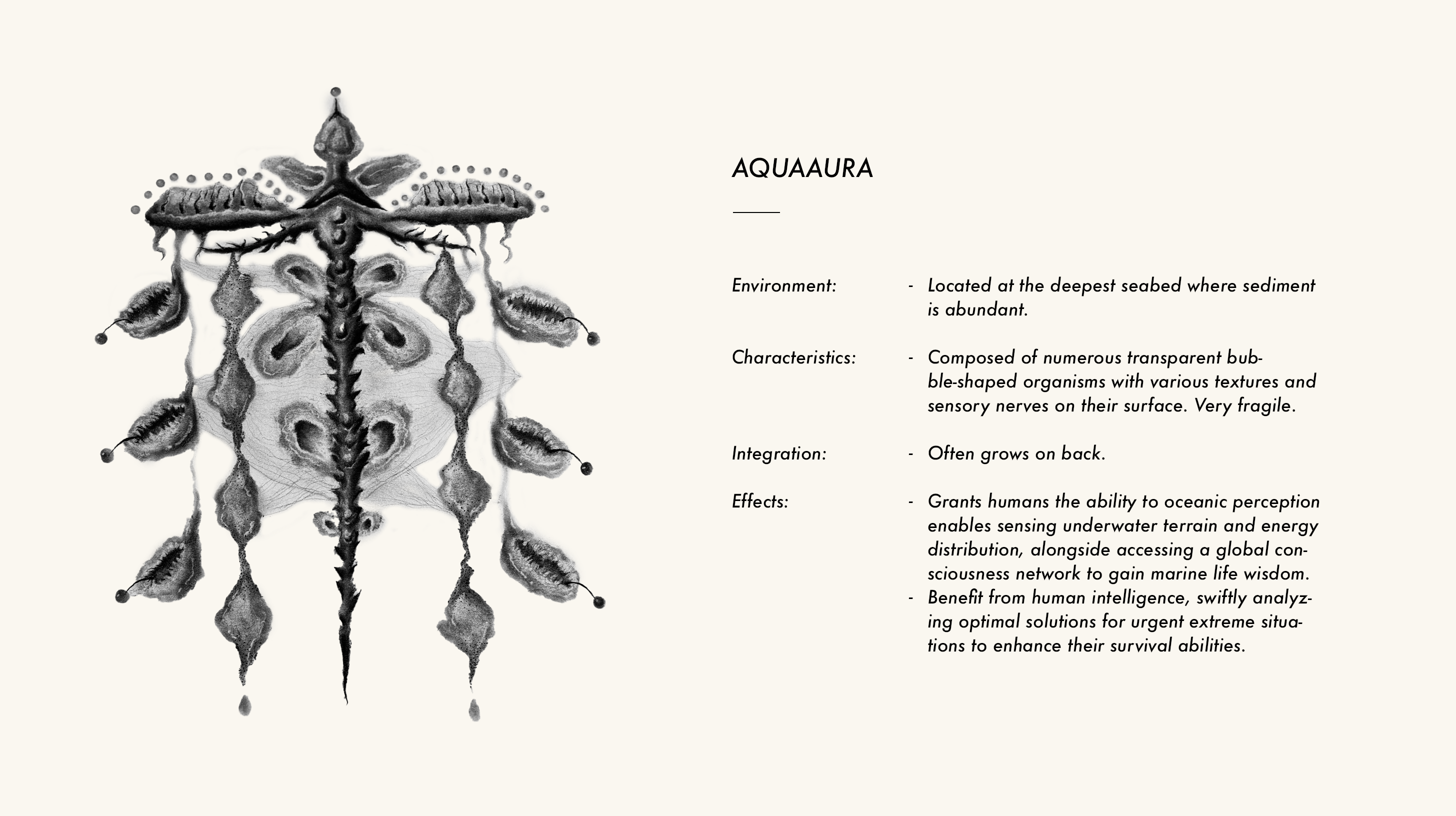
3D Modeling: Giving Form
The organisms were first translated into digital 3D models, which provided them with a more tangible presence. This stage emphasized the transformation from speculative sketches into structured geometries, revealing how abstract concepts could begin to take on form. The modeling process also served to explore structural integration with the human body, setting the foundation for later visualization as wearable objects.
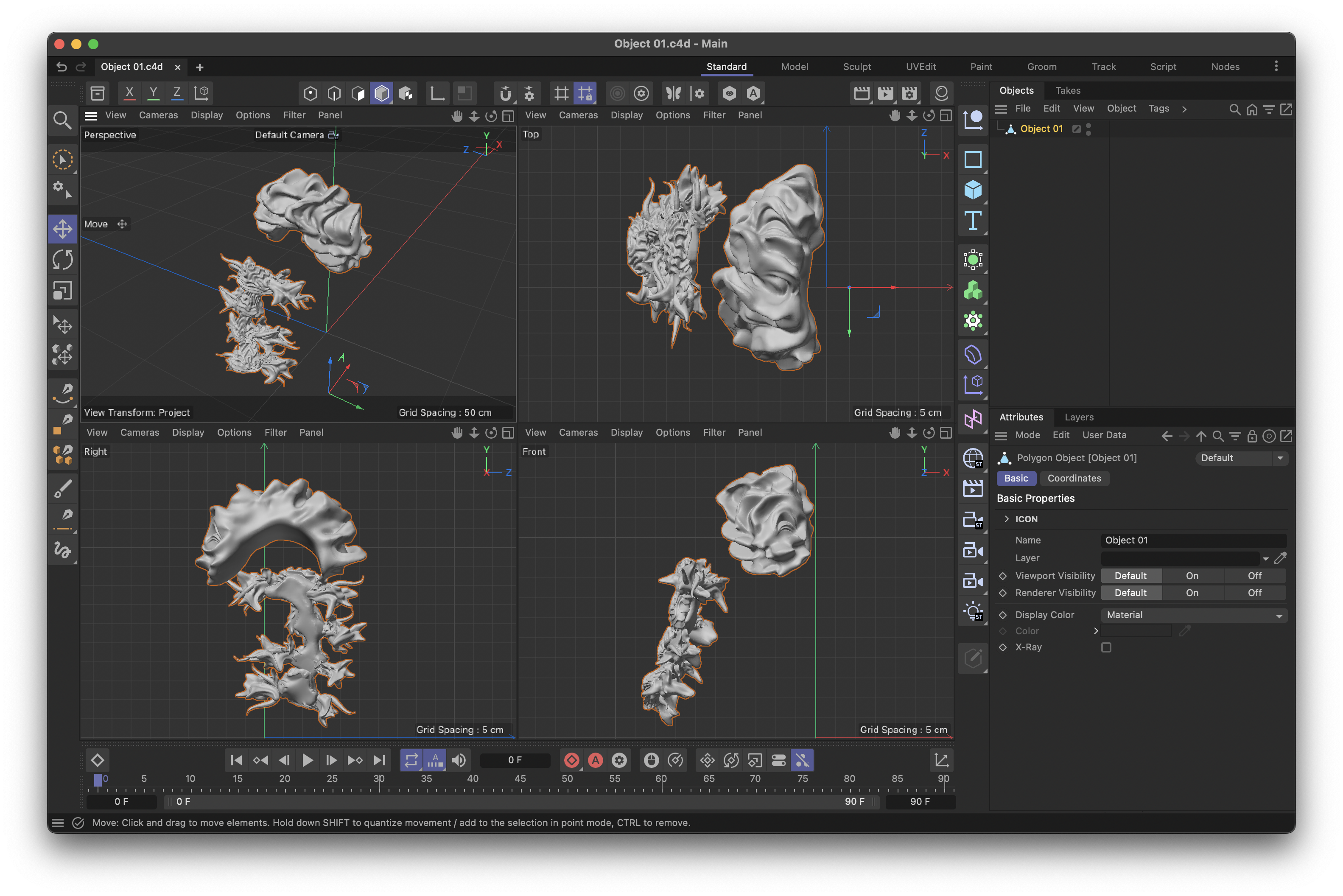
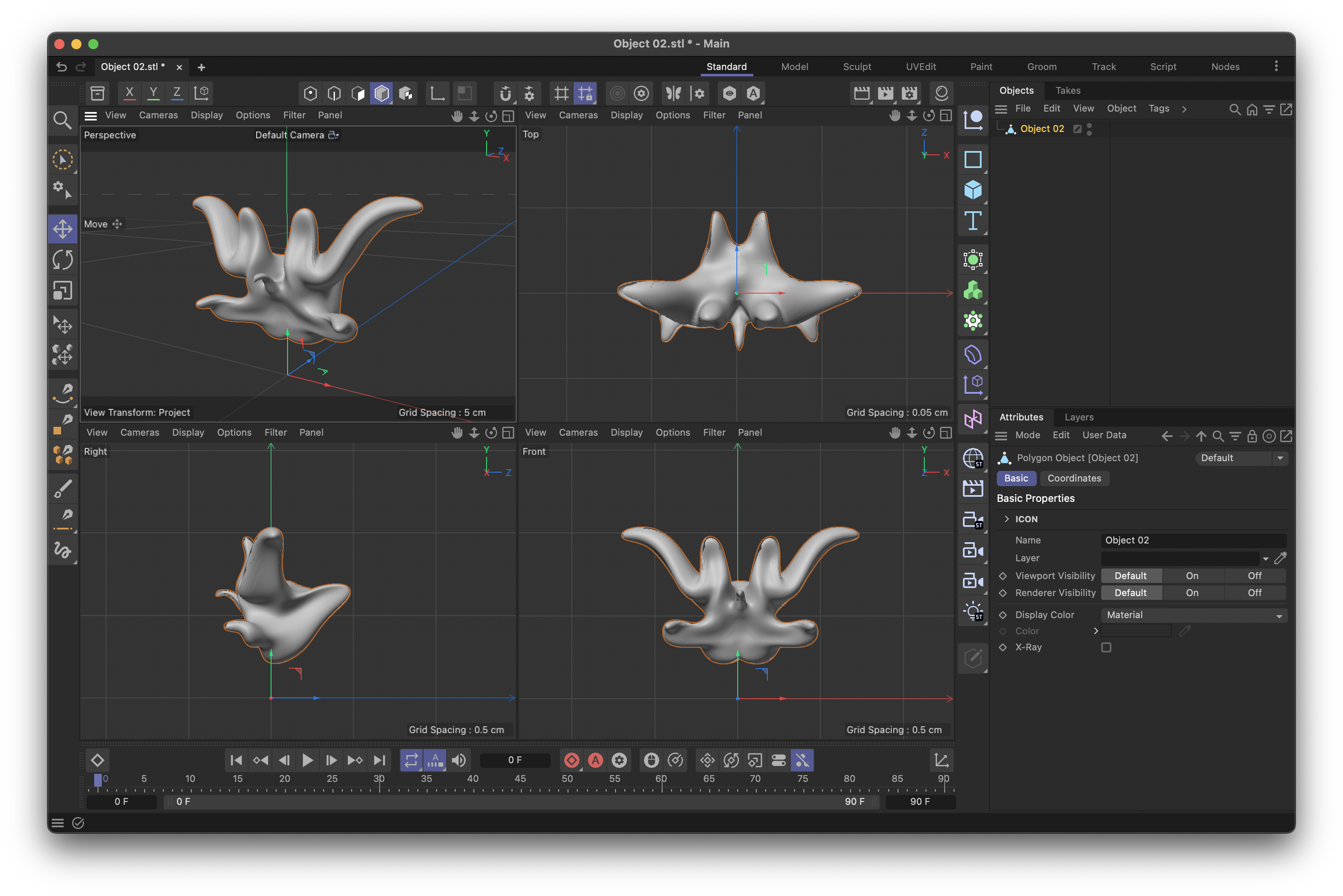
Building upon these modeling explorations, the forms were refined and rendered into their final iterations. At this stage, the focus shifted from technical construction toward visual impact and embodiment. The organisms were placed onto the human body to test scale, proportion, and intimacy—transforming speculative concepts into visual artifacts that could be experienced as wearable organisms.
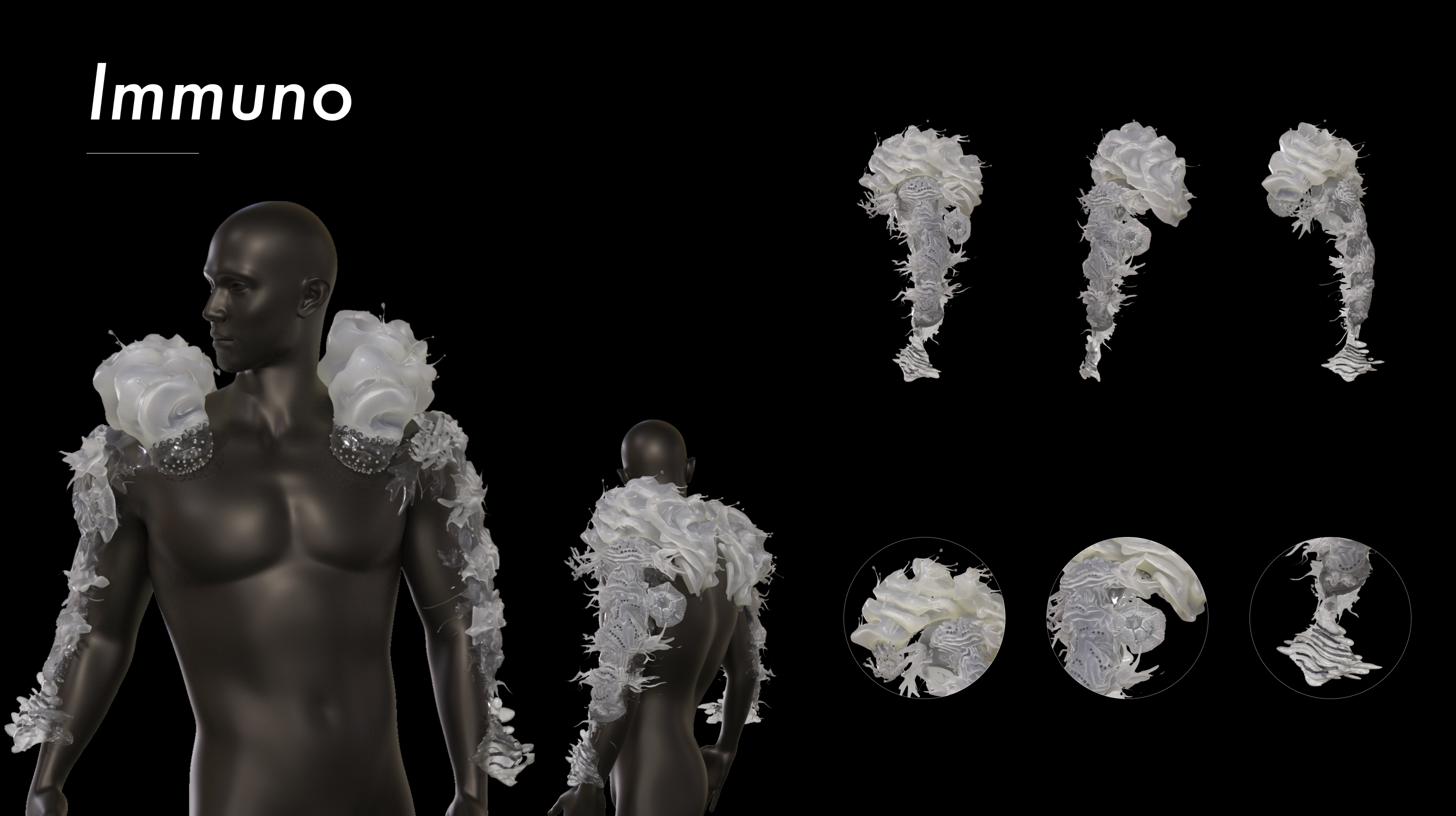
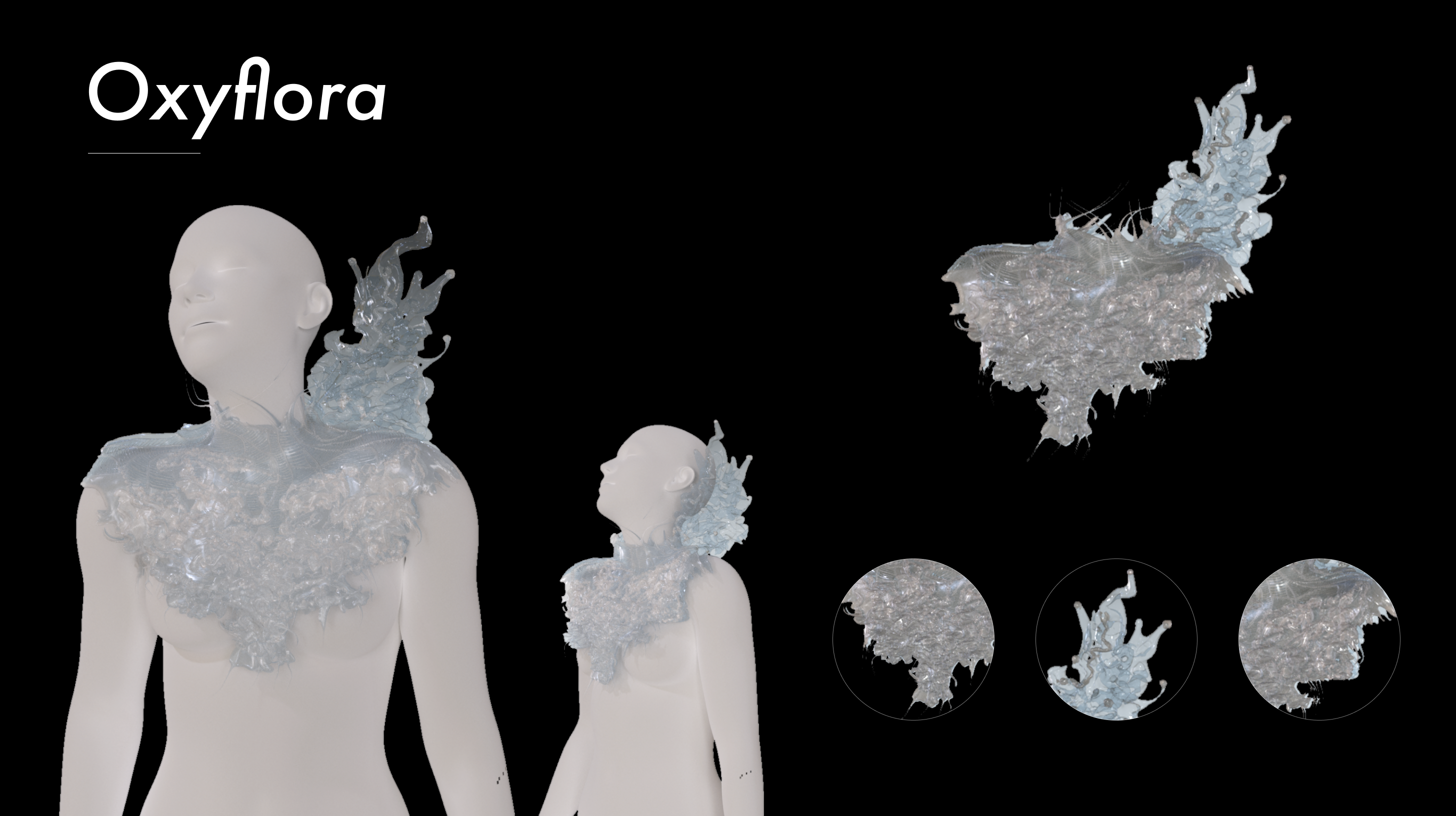
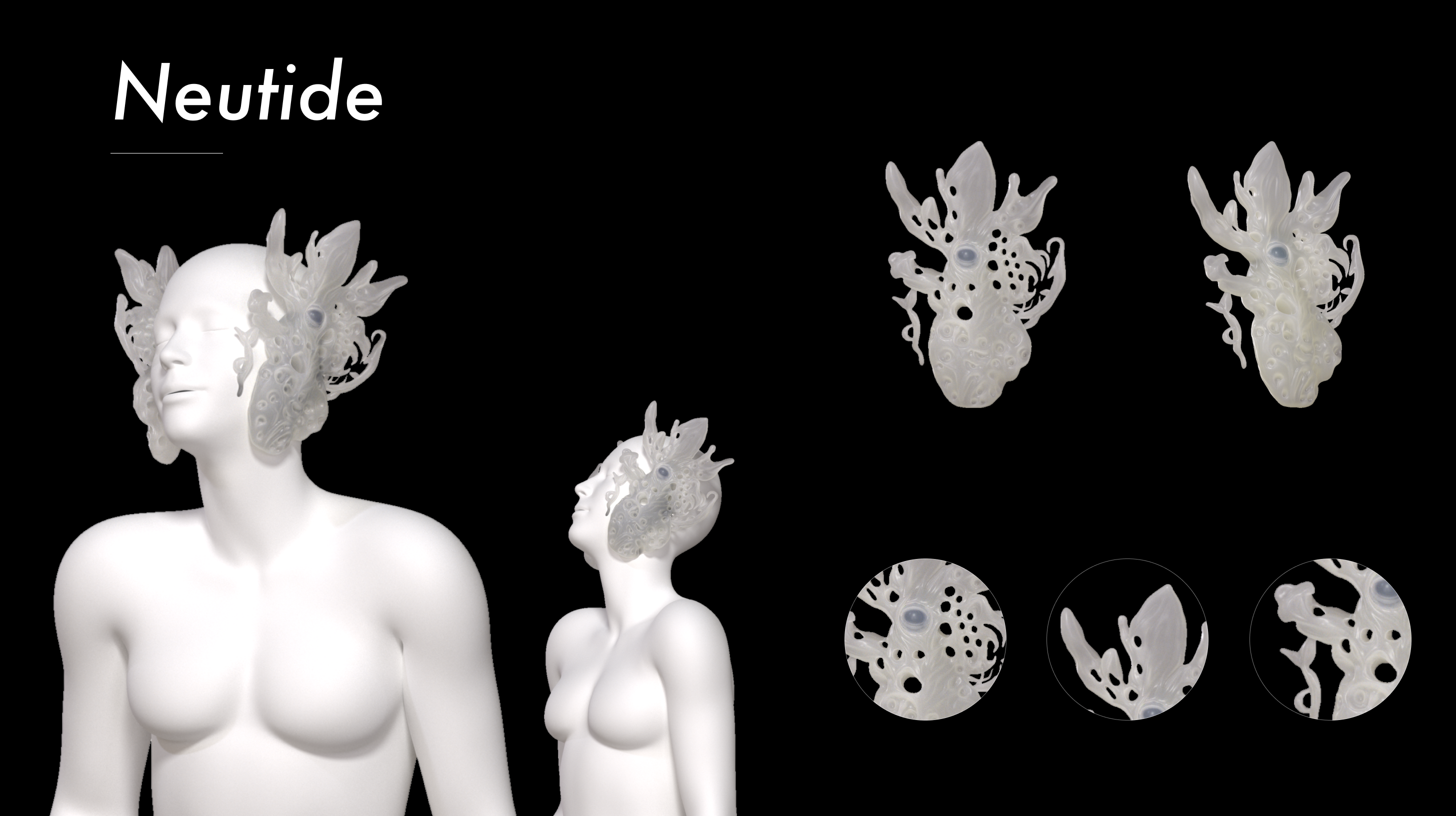
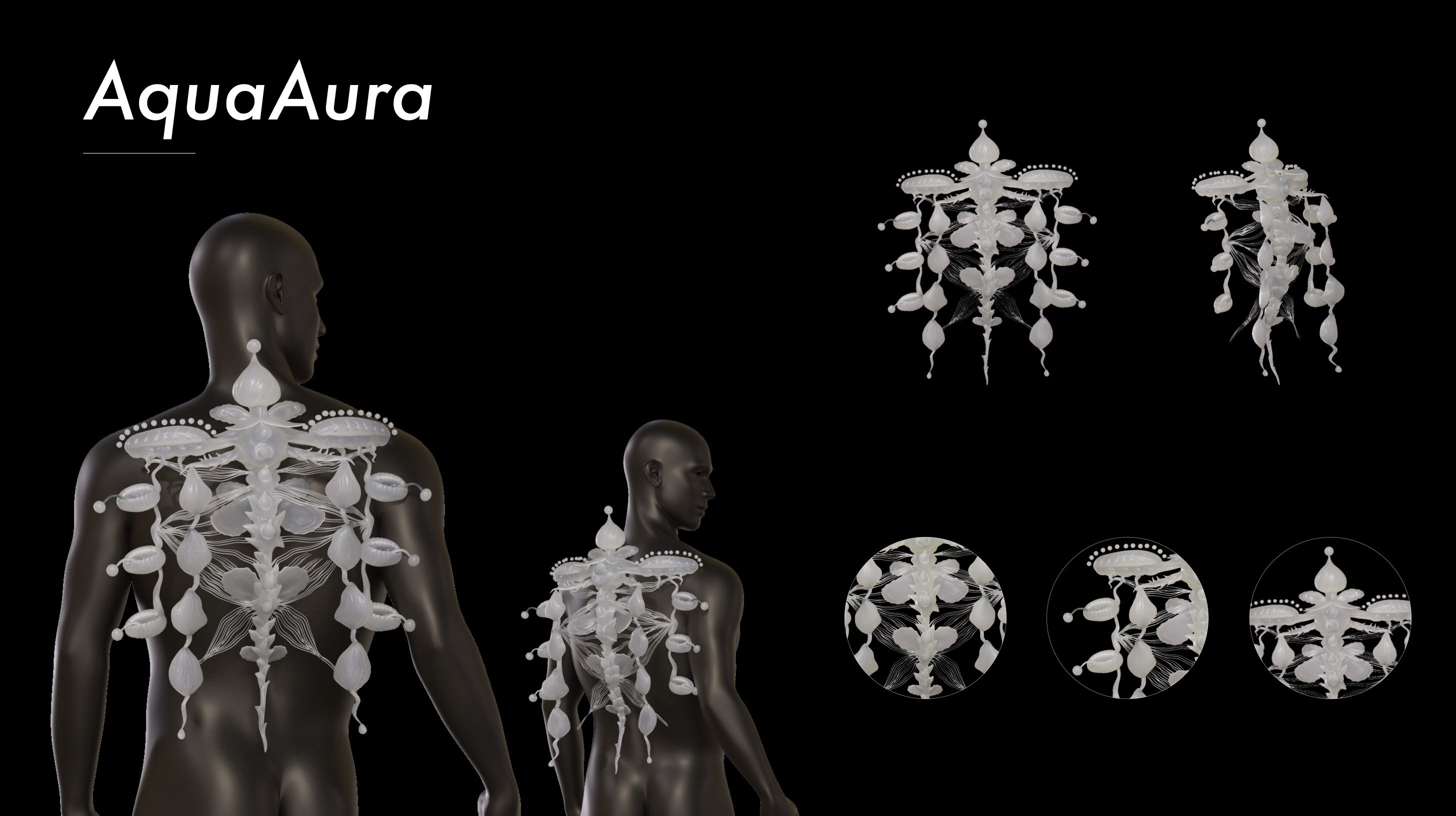
Prototyping: Animating Materiality
After developing digital models, the organisms were translated into physical form through Material experiments and 3D printing. These fabrication trials allowed me to explore how different textures, translucencies, and structural details could give the organisms a more visceral presence. The process was not only about testing feasibility, but also about discovering how material qualities could amplify the sense of organic life and bodily integration.
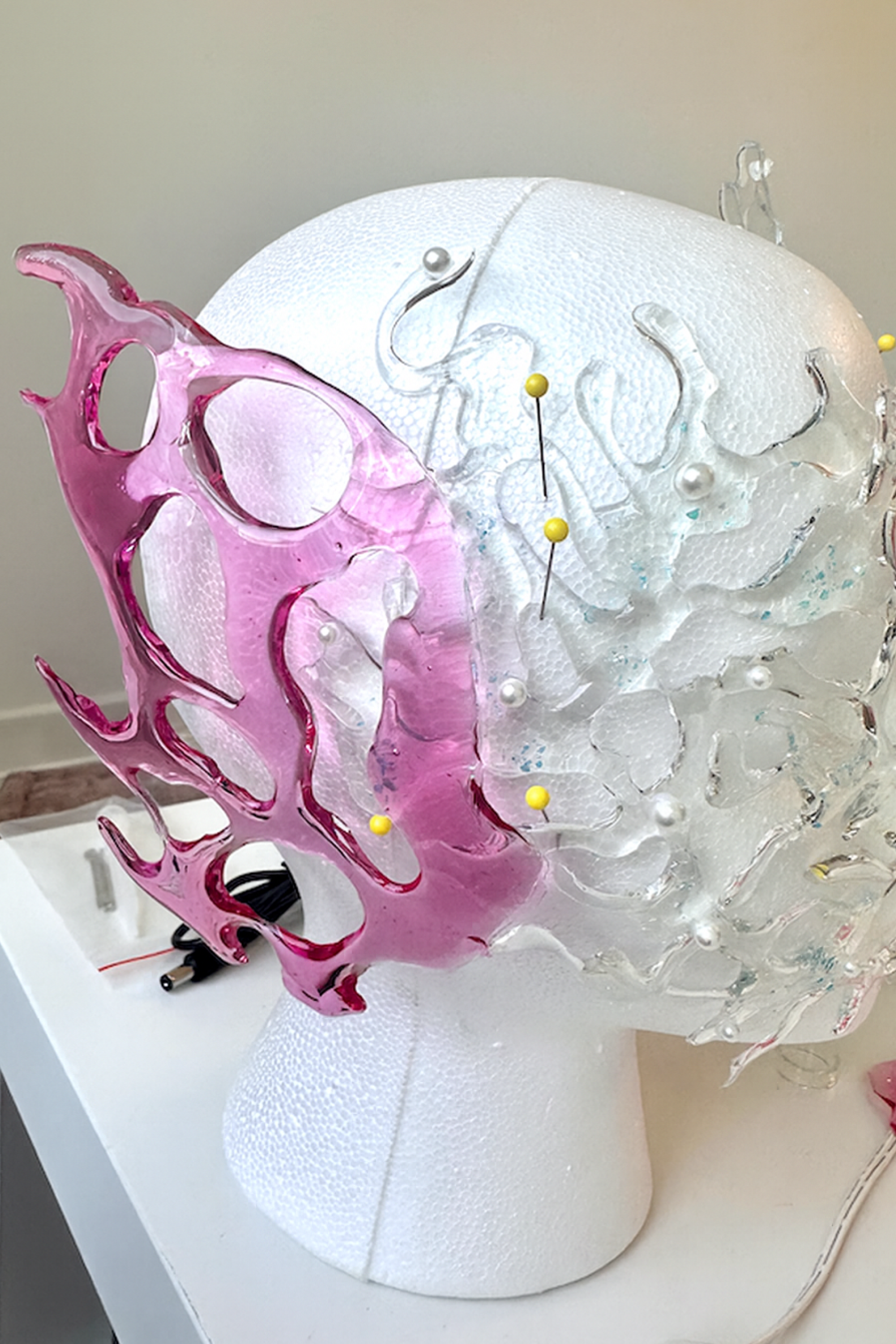
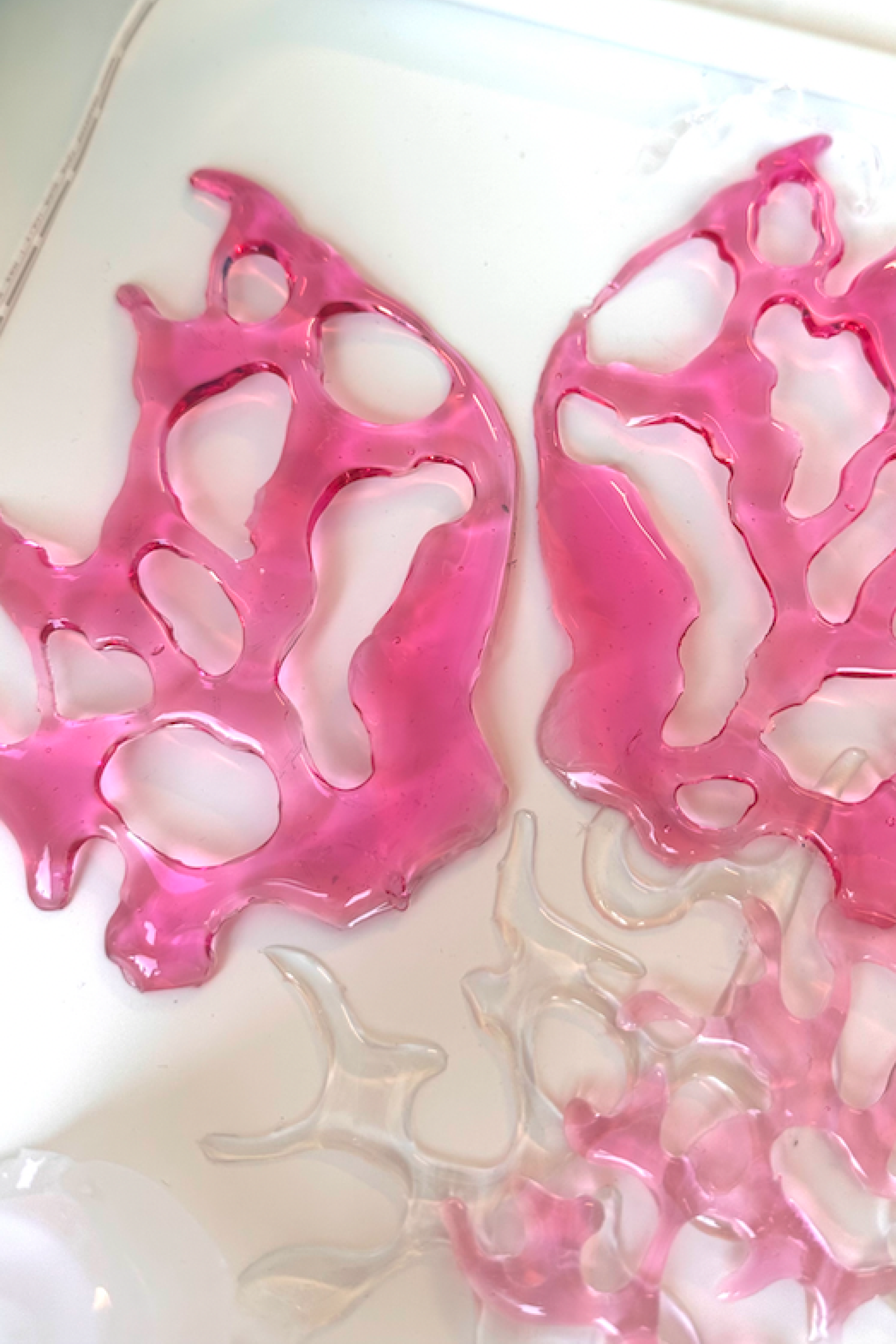
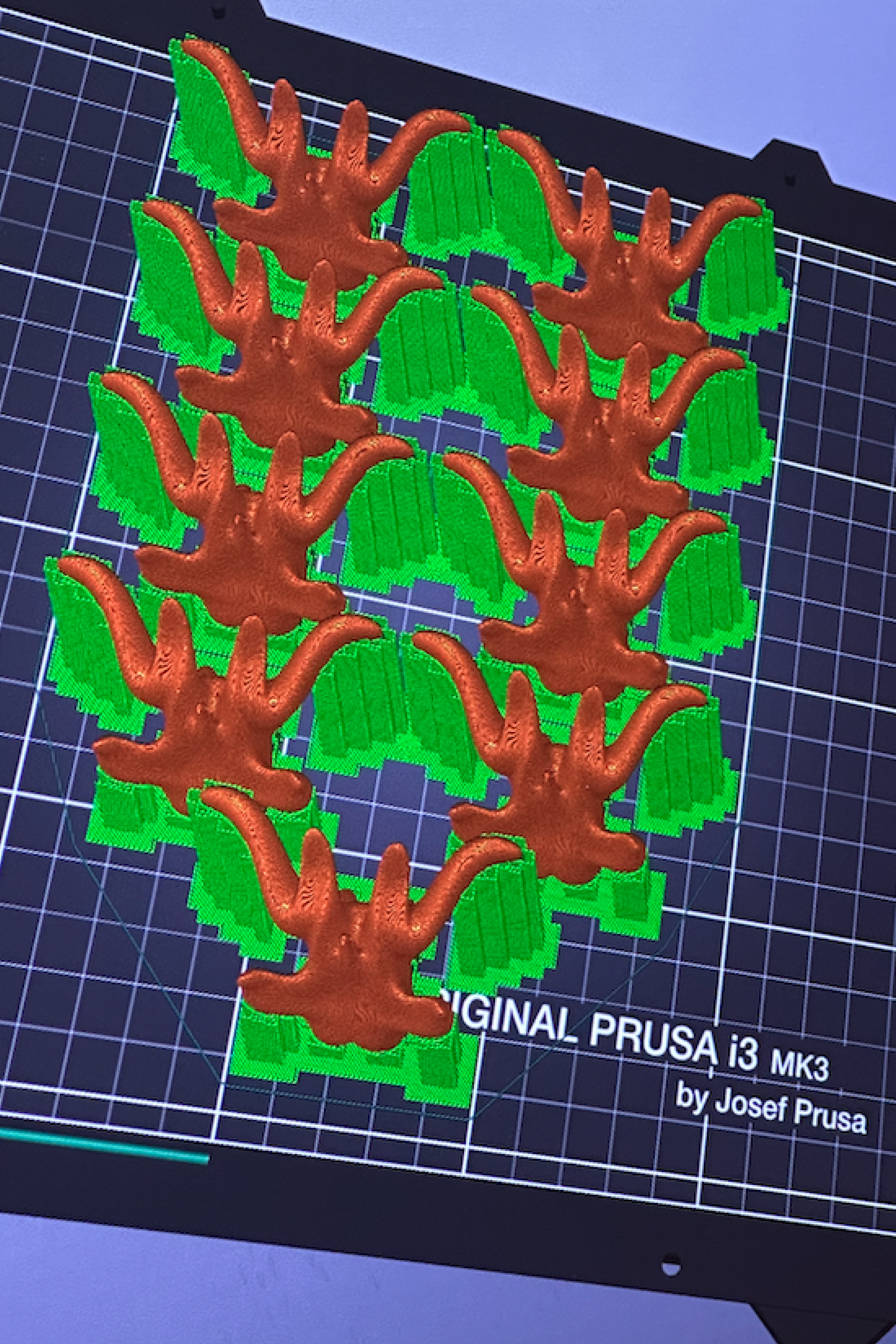
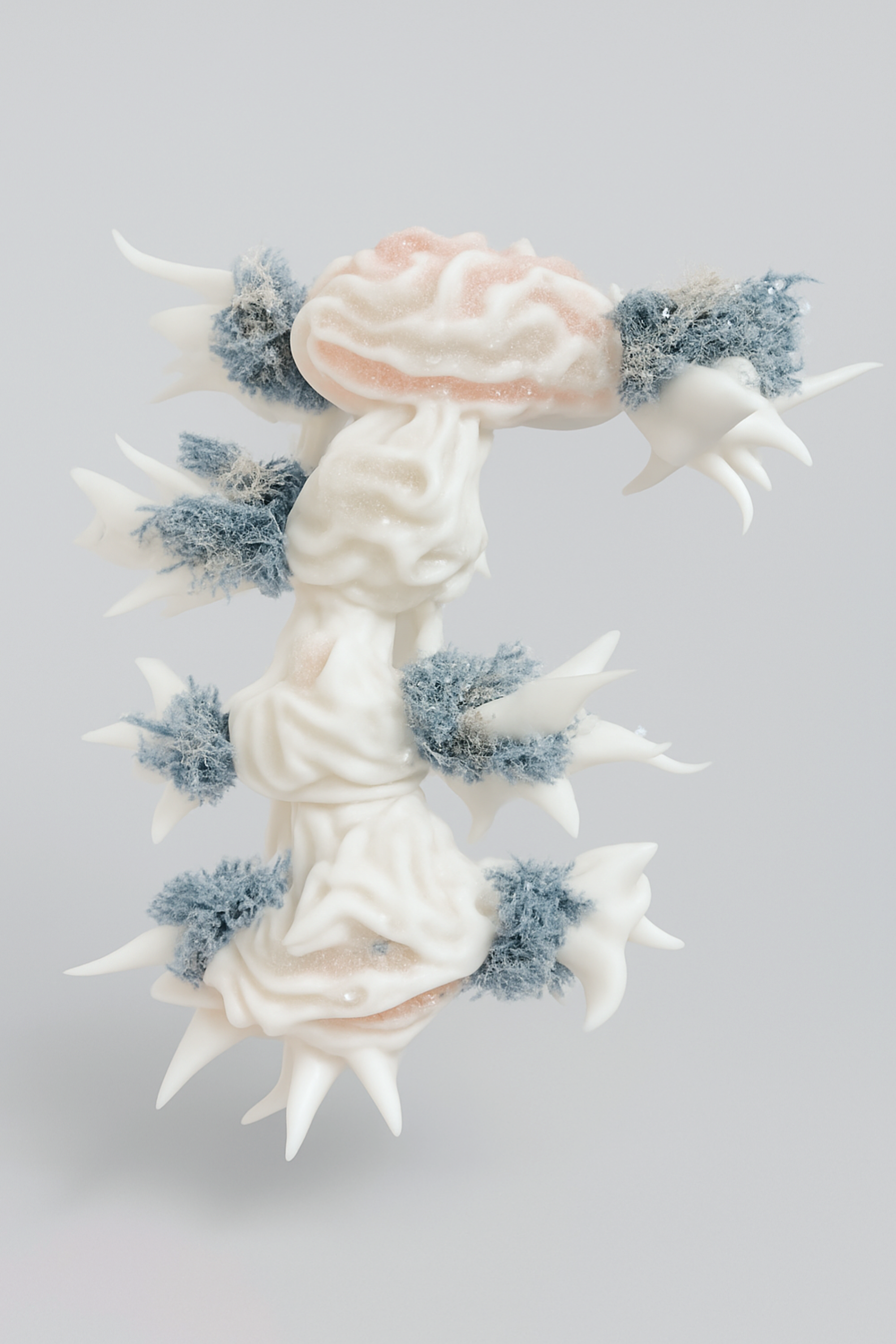
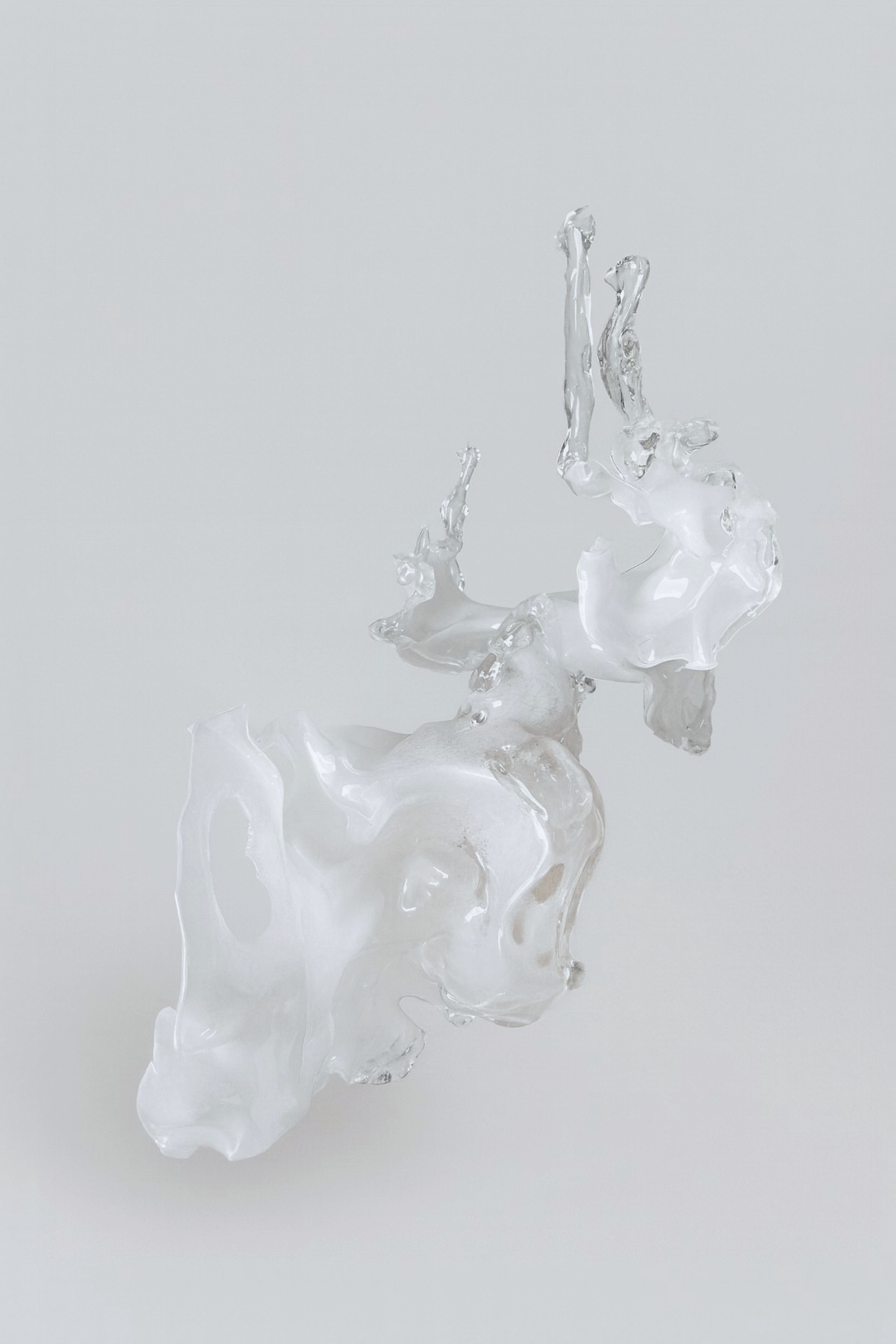
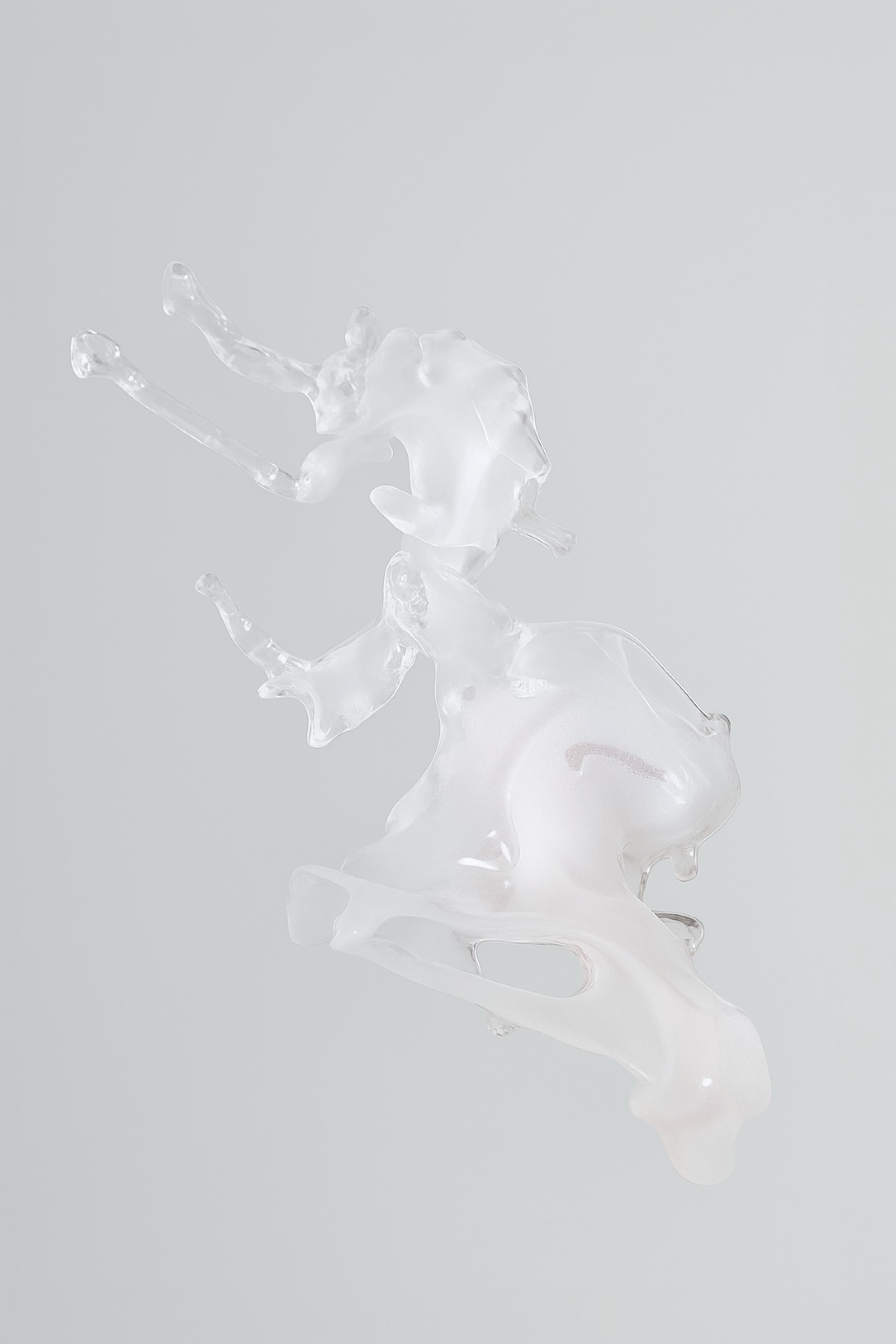
Building on these material explorations, I created a tangible prototype to explore how speculative organisms might respond and adapt. Using simple sensors and programmed light rhythms, two LEDs simulated a coupled “breathing” pattern—each influencing the other over time. This modest sketch translated the abstract idea of ecological interdependence into a perceivable rhythm, suggesting how such organisms could one day embody both environmental responsiveness and symbiotic coexistence.
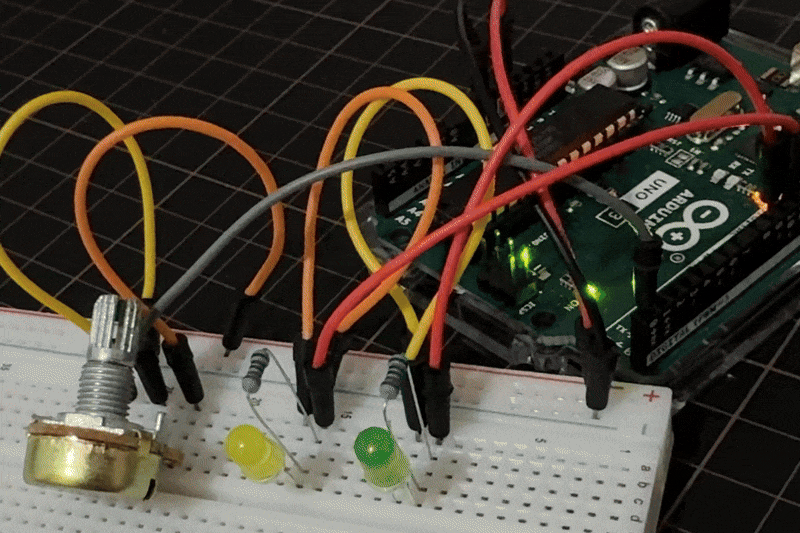
Habitat Mapping: Constructing Ecologies
Finally, a conceptual habitat map was developed to situate the organisms within a broader underwater ecology. Based on the earlier definitions of habitat and behavior, this fictional cartography illustrates how each species might spread across reefs, trenches, or kelp forests, and how they would interact with both the environment and human hosts. This stage expanded the project from individual prototypes to an imagined ecosystem of coexistence.
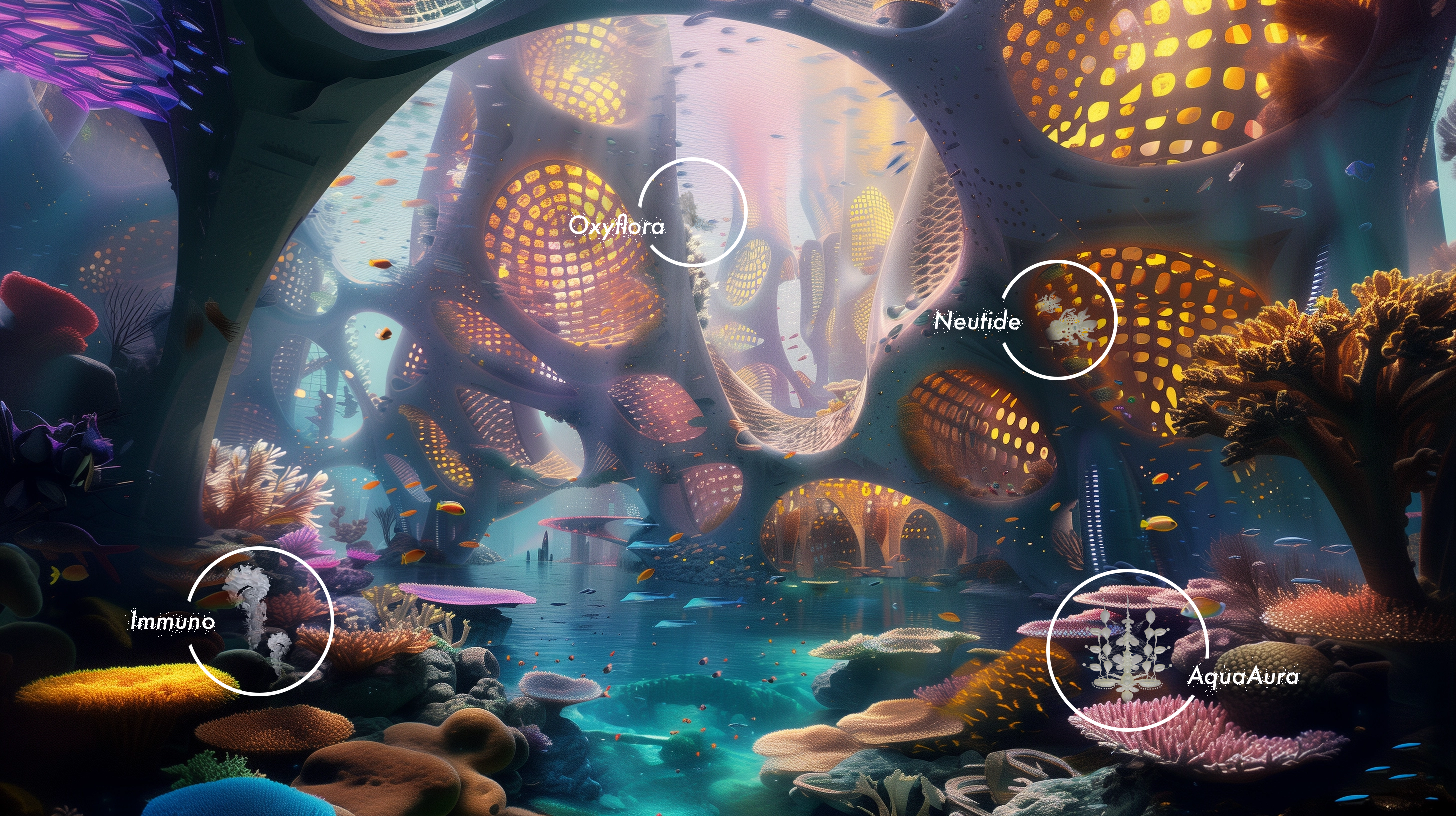
The development of Organisms Utopia was supported by two key anchors: sustainability and interdisciplinary collaboration.
Sustainability
Material and process choices were guided by an ecological awareness. Biodegradable polymers and recycled plastics were considered for 3D printing, while the wearable pieces were designed for durability and adaptability, reducing waste across their lifecycle. These decisions reinforced the project’s conceptual aim — not only imagining a symbiotic future, but embodying it through responsible design practice.
Collaboration
In parallel, collaboration with biologists and environmental scientists informed the speculative organisms. Conversations about marine ecology, parasitism, and biodiversity shaped the plausibility of their forms. At the same time, theoretical dialogue—drawing from biosemiotics and cellular signaling pathways—framed the organisms as agents of symbolic communication. Insights from ecological philosophy and posthumanist thought further shifted the perspective beyond anthropocentrism, situating humans, nonhumans, and environments within a shared network of interdependence. These exchanges grounded the work in both scientific reference and philosophical reflection, allowing design, ecology, and imagination to converge.
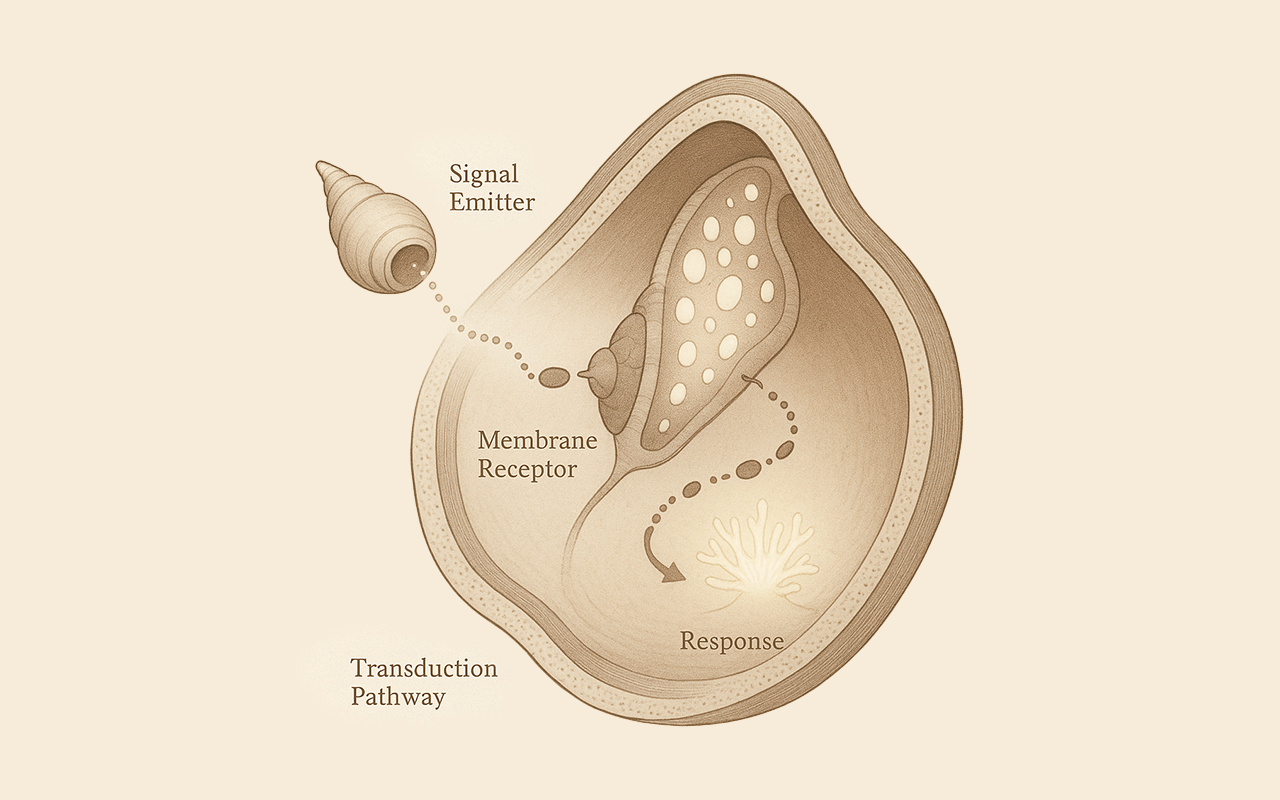
Cellular signaling as the basis of biosemiotic exchange.
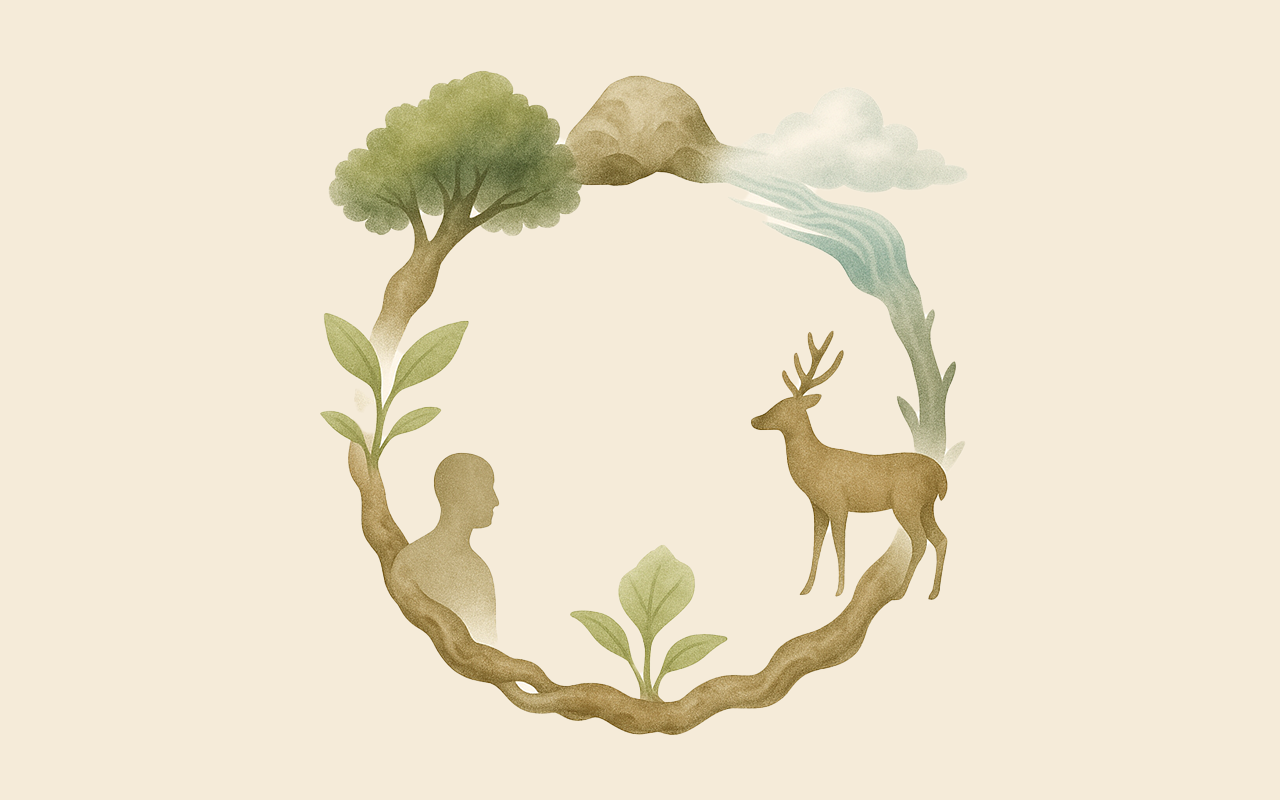
Ecological interdependence beyond anthropocentrism.
The project concludes with both tangible and cinematic outcomes. A series of photographs documents the wearable pieces as physical artifacts, emphasizing their textures, material qualities, and embodied presence. These still images ground the speculative organisms in physical reality, demonstrating how design can manifest as crafted objects.
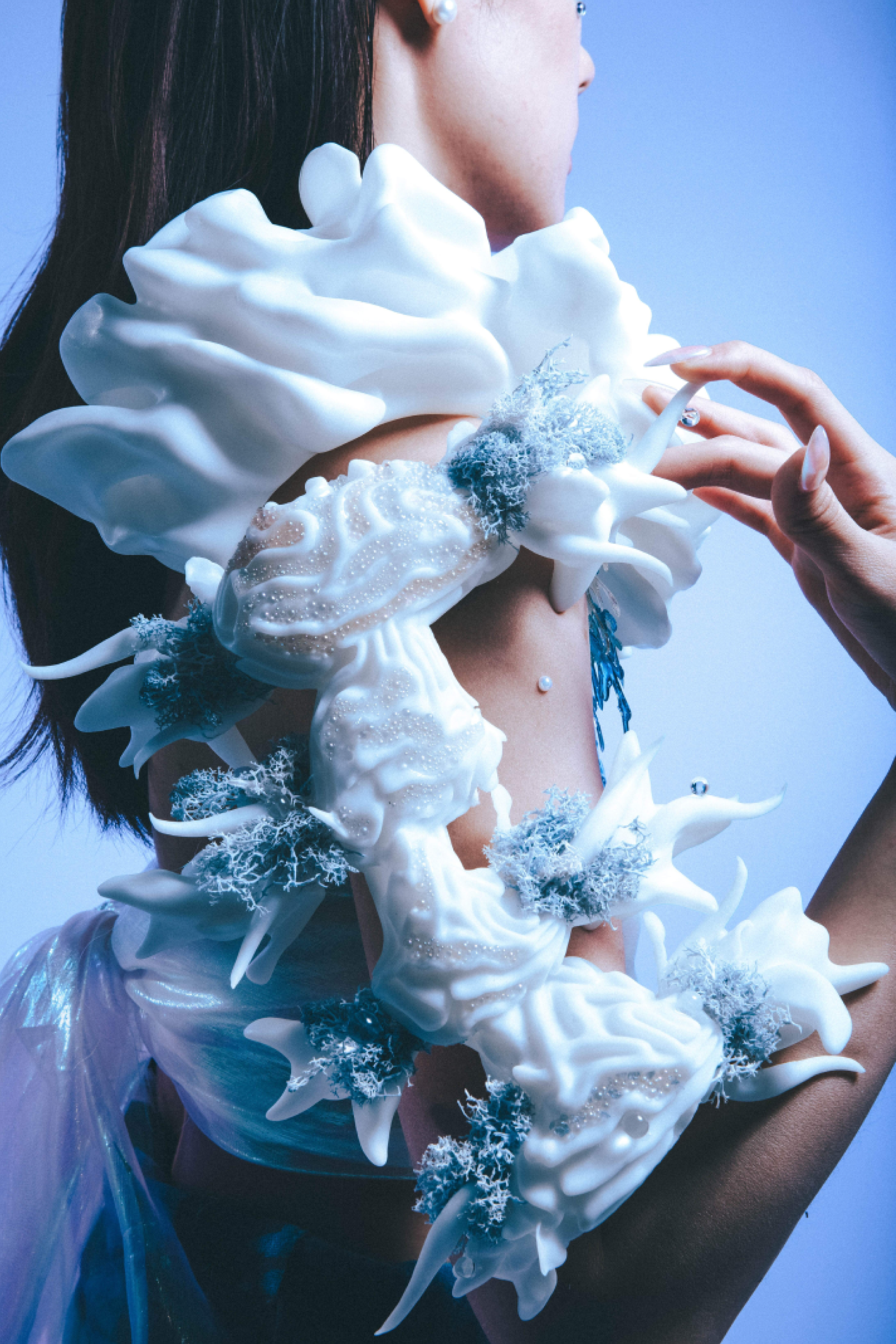
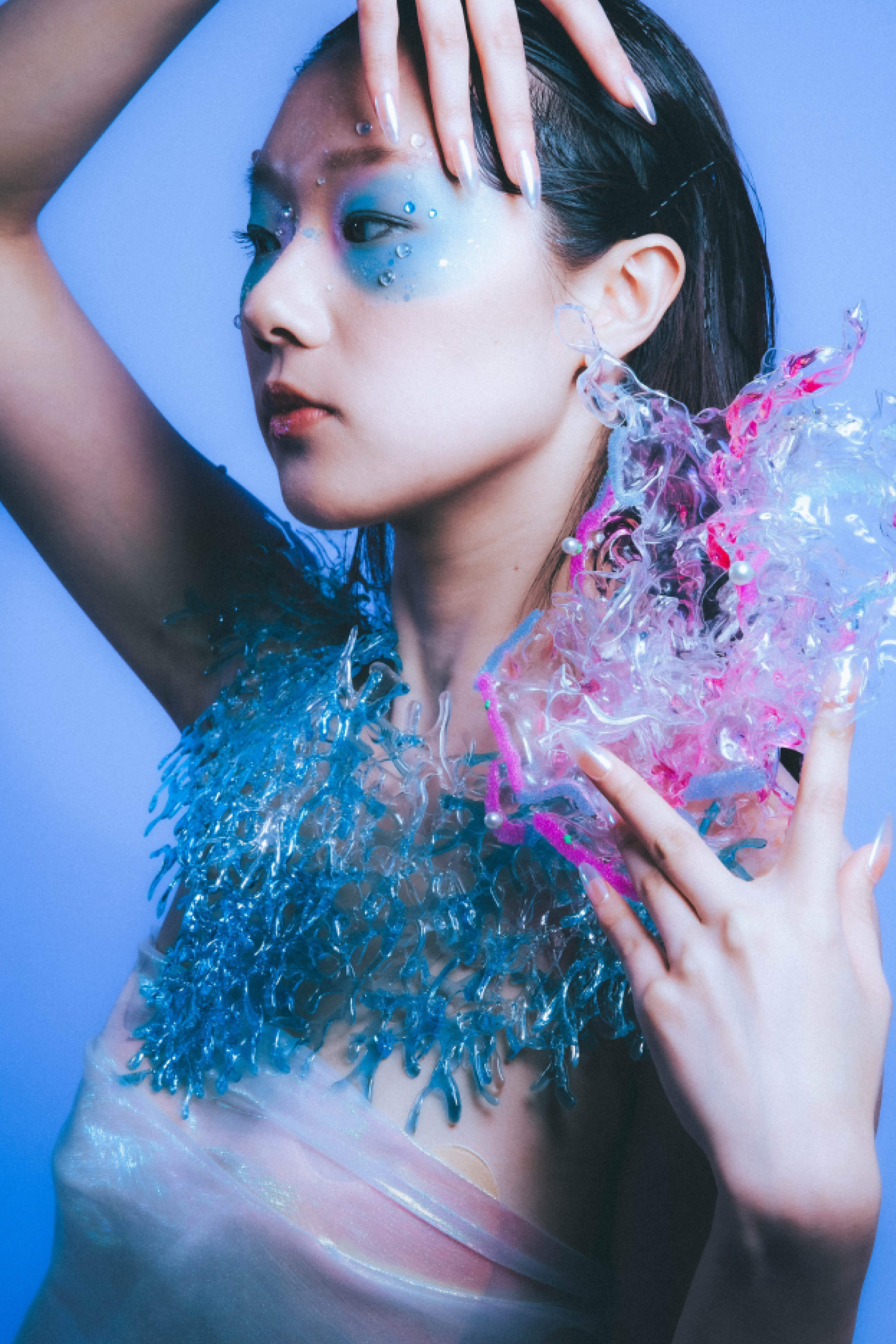
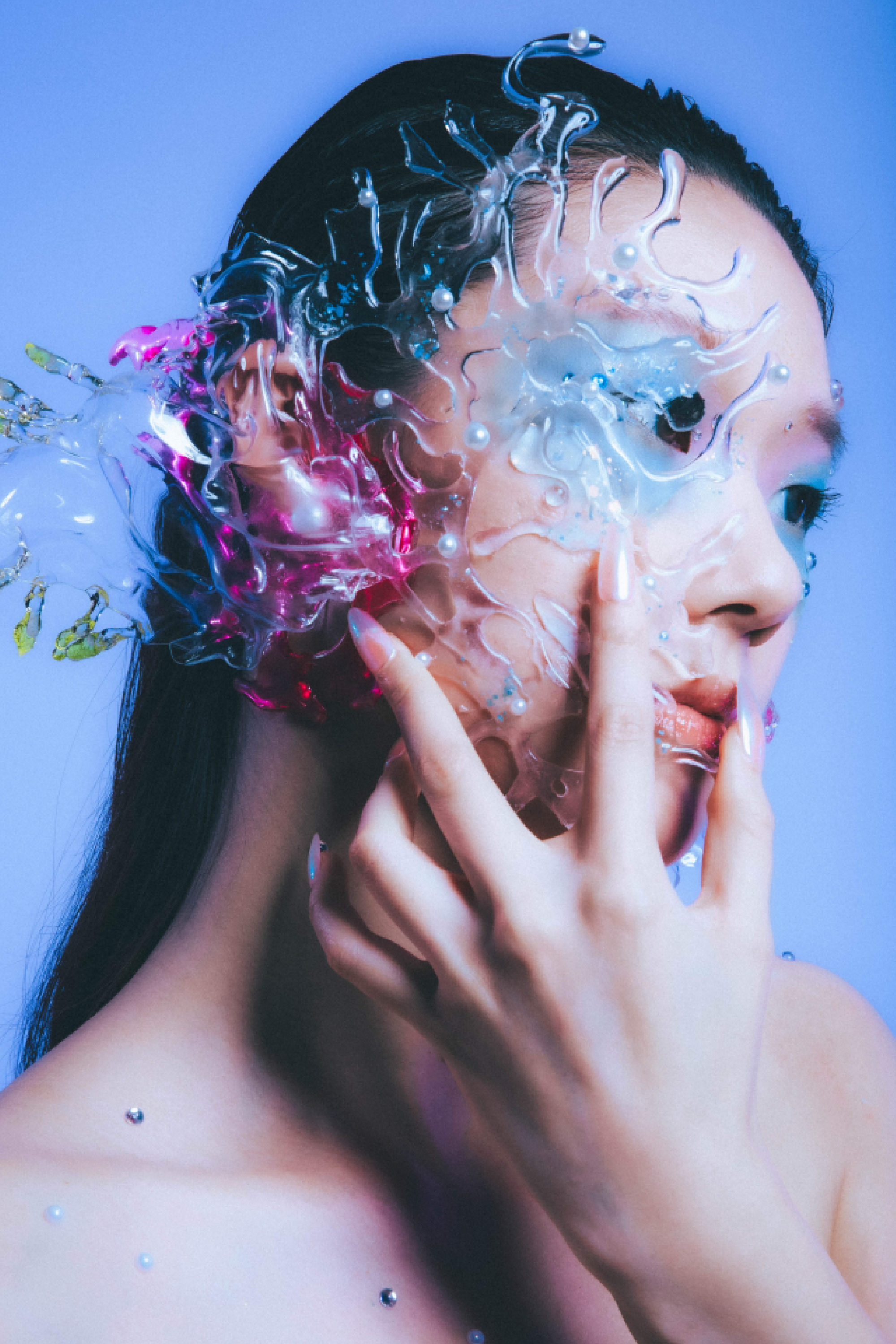
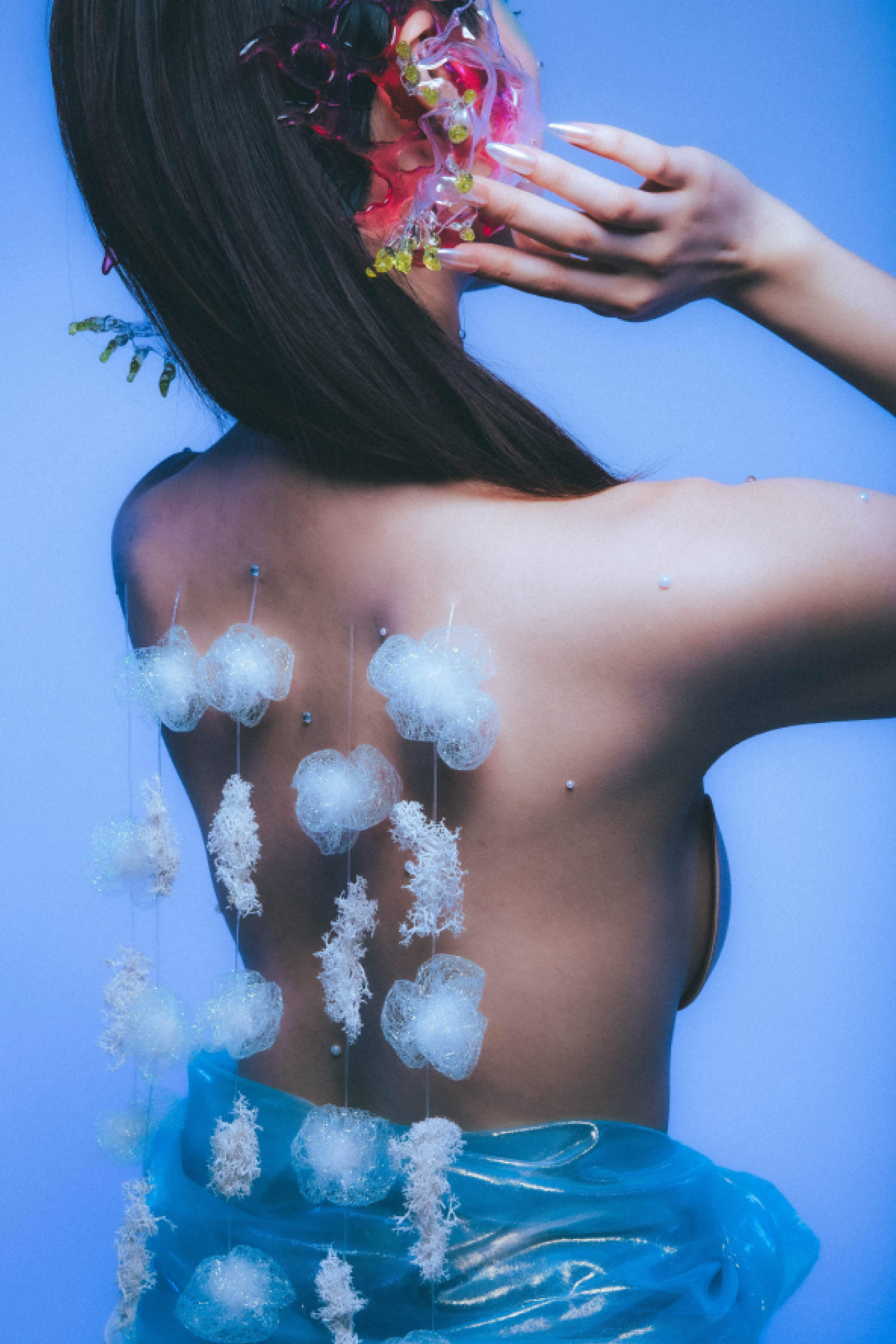
Building on this physical layer, a short speculative film extends Organisms Utopia into an immersive narrative. Bringing together sketches, 3D models, and fictional ecologies, the film situates the organisms within a living world. Through sound, motion, and atmosphere, it functions as a narrative artifact that expands the project beyond objects, inviting the audience to experience the scenario as a shared, affective environment.
The symbiotic model imagined in Organisms Utopia is not a solution but a provocation — an invitation to reconsider how humanity defines itself in relation to other species. If survival were contingent upon reciprocity rather than control, what new forms of responsibility and humility might emerge?
This speculative scenario does not claim to resolve ecological crises, but to ask how design can expand the way we think about coexistence. By envisioning organisms that merge with the human body, the project reflects on blurred boundaries between self and other, human and nonhuman. It suggests that life may not be an individual possession, but a shared condition sustained through entanglement.
Whether humanity can truly shift toward such symbiotic futures remains uncertain. What is certain, however, is that by imagining them, we open space for dialogue — about ethics, ecology, and the redefinition of what it means to be alive.